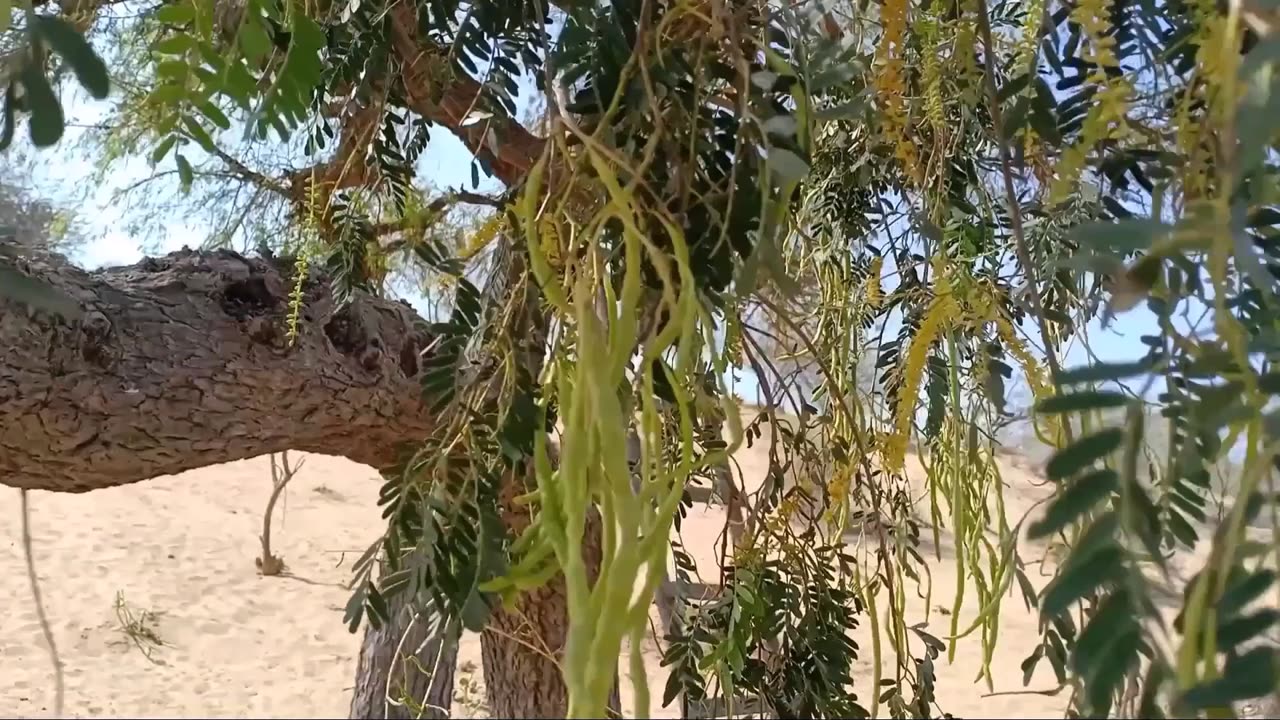Premium Only Content

Prosopis Cineraria Tree, highly Valued Khejri, Chhonkara, and Jammi
Here is a quick view of the Prosopis cineraria tree.
If you're interested in seeds to this beautiful tree please visit our website at:
https://www.theplantattraction.com/products/prosopis-cineraria-tree-10-seeds-highly-valued-khejri-chhonkara-and-jammi?_pos=1&_sid=9c00109d9&_ss=r
Prosopis cineraria
Also known as Ghaf, Khejri, Chhonkara, and Jammi.
This is a small flowering, irregularly branched, evergreen tree with a thin, open crown, that can grow up to about 6.5 meters tall. They produce yellowish cream colored catkin flowers in the spring. There are thorns on immature growth, but thorn production should decrease as the tree matures and growth slows.
This tree has a wide range of uses for food as it is rich in protein. It highly supports honey bees with long and abundant flowering and honey produced is of a good quality. Extensively used as animal fodder feed as the leaves and pods are highly palatable and nutritious. Despite the economic importance for food, plants have been used in traditional medicine to treat various human ailments since ancient history. It possess many medicinal properties and used to cure many diseases. Studies showed that leaves and seeds were largely used to treat many diseases such as diarrhea, inflammation, measles, diabetes and prostate disorders.
These are not the only uses of the P. cineraria tree. The good bark is considered a good source of woods that can be used to make tool handles, boat frames, posts, and houses. While the poor or bad quality bark can be used as timber and other various commodities.
This species has a symbiotic relationship with certain soil bacteria, these bacteria form nodules on the roots and fix atmospheric nitrogen. Some of this nitrogen is utilized by the growing plant but some can also be used by other plants growing nearby.
It is native to arid, tropical and subtropical portions of Western Asia and the Indian Subcontinent. Established plants are very tolerant of drought, dry winds, salt, and alkalinity. Only young saplings require regular watering. It can grow on a variety of soils but good growth is obtained in deep sandy loam soil. Although young plants, and young growth on older plants, are sensitive to frost, mature plants can tolerate occasional, short-lived frosts down to -6 c/ 21 f.
*This tree should NOT to be confused with the similar looking Chinese lantern tree, Dichrostachys cinerea, they can be told apart by the flowers. While the Chinese lantern tree has bicolored pink-yellow flowers, this tree has yellow-colored bristled flowers only, like most other mesquites.
-
 2:43:07
2:43:07
RG_GerkClan
4 hours agoLIVE: Lets Get to 500 FOLLOWS! - Escape From Tarkov - Gerk Clan
4.32K2 -
 LIVE
LIVE
Vigilant News Network
18 hours agoHillary Clinton EXPOSED In Another Massive Hoax | The Daily Dose
2,196 watching -
 1:00:17
1:00:17
Trumpet Daily
1 day ago $5.12 earnedRINOs Are Trump’s Biggest Enemy Now - Trumpet Daily | Nov. 22, 2024
3.32K16 -
 17:47
17:47
RealReaper
13 hours ago $0.03 earnedGladiator 2 Another Pointless Sequel
3.23K1 -
 45:45
45:45
PMG
11 hours ago"Hannah Faulkner and Stephanie Nash | No Farms No Food"
166 -
 27:11
27:11
Degenerate Plays
1 day agoReturn Of The Online Girlfriends - Stellar Blade : Part 30
71 -
 7:16
7:16
SeasonofMist
2 days agoSOLSTAFIR - Fjara (Official Music Video)
282 -
 3:54
3:54
Good Kid Productions
9 days agoTrump just broke legacy media. We're building something better.
300 -
 3:13:17
3:13:17
Boxin
5 hours ago(Rumble push to 50 Followers!) (alerts Working...?) Spoopy Month!!!! Resident Evil 7 Biohazard 4
67K2 -
 2:26:35
2:26:35
Father Russell
5 hours agoThrone and Liberty | Morning Stream
43.2K1